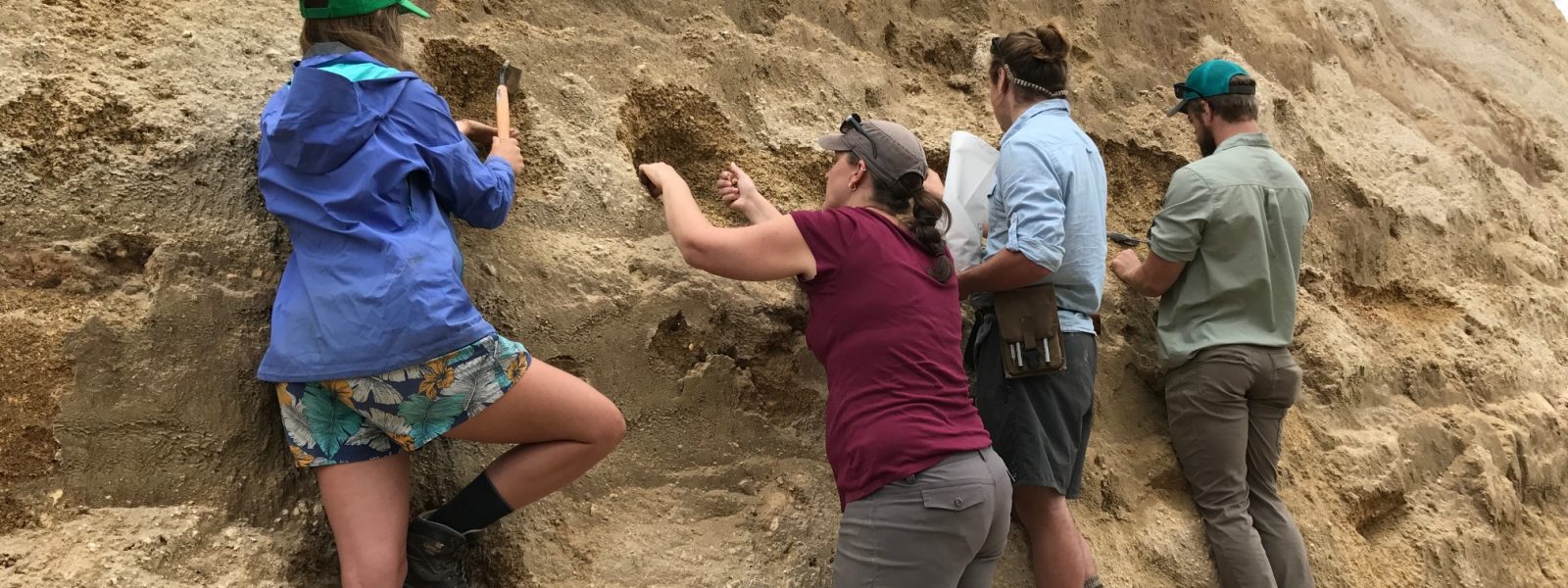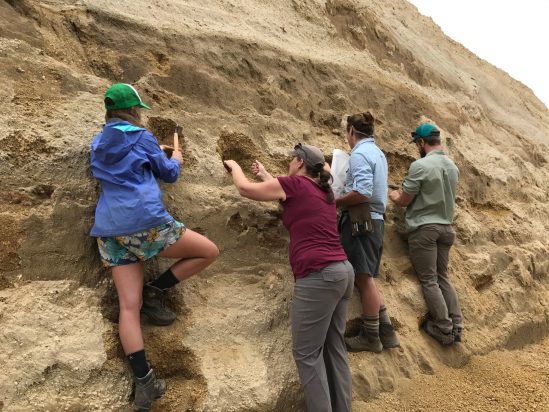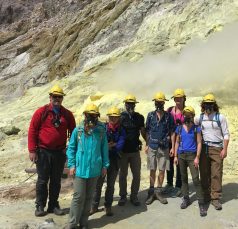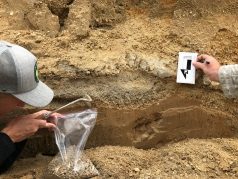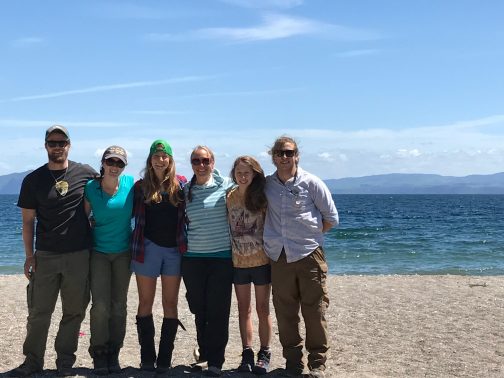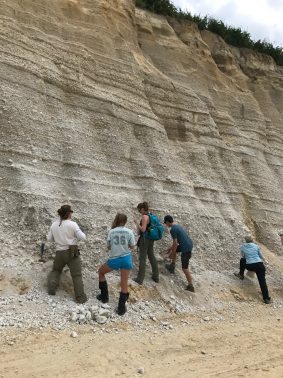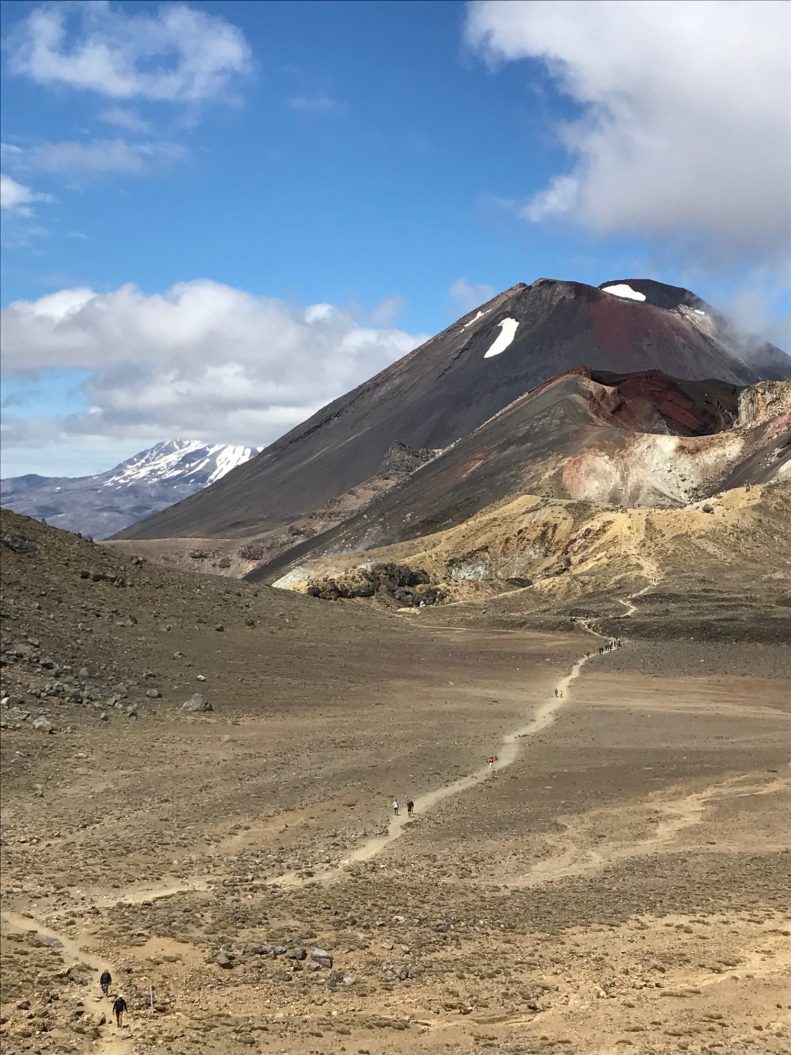Kari Cooper (UC Davis), Adam Kent (Oregon State University), Chad Deering (Michigan Tech), and collaborator Darren Gravley (University of Canterbury, New Zealand)
The largest volcanic eruptions are rare events but when they occur can represent a global catastrophe. Relatively small eruptions may still have significant economic impacts (billions of dollars) and may affect the lives and livelihoods of large numbers of people – even in places quite distant from the erupting volcano (e.g., the relatively small Eyjafjallajokull eruption in Iceland in 2010). In an effort to study the processes that lead to large volcanic eruptions in more detail this project focuses on examining the highly active Taupo Volcanic Zone (TVZ) in New Zealand. Our goal is to develop a better understanding of how the temperature and mobility of a magma body below the surface changes before, during, and after a major eruption. As such the project contributes to an emerging understanding of the volcanoes and magmatic processes that can produce such large eruptions, and provides context for interpretation of hazard monitoring at these and other active volcanoes. The project also includes research experience for two K-12 teachers (one in the US and one in New Zealand), and will lead to development of new standard-based physics, chemistry and mathematics curricula.
Our approach is primarily a petrological and geochemical one and will focus on studying full caldera cycles – in addition to studying large eruptions themselves we will also focus on the smaller eruptions that occur before and after major episodes. We will couple age data with compositional data for both crystalline (plagioclase and zircon) and liquid (melt inclusions) parts of the erupted magma at the TVZ to develop constraints on the compositional and thermal variations within magma storage zones prior to eruptions. The project is at an early stage, but we have already compiled preliminary data and conducted a comprehensive sampling campaign during field work in December 2017. The field work was highly successful, bringing together PIs and graduate students from the three US institutions (UC Davis, OSU, and Michigan Tech) with our collaborator at University of Canterbury, along with K-12 science teachers Sara Moilanen (Houghton, MI) and Damien Canney (Christchurch, NZ). Field work also blended sample collection with filming videos of how we conduct field work and brief explanations of volcanic deposits and phenomena, which will be used to develop K-12 course content. The six graduate students in the group (Tyler Schlieder and Elizabeth Grant, UCD; Jordan Lubbers and Nicole Rocco, OSU; Olivia Barbee, MTU; and Lydia Harmon, Vanderbilt Univ.) also maintained a blog on the daily activities of the crew, and participated in the educational videos. The field work also set the stage for monthly video conferences among the graduate students, which helps to maintain coordination between individual thesis projects and the project as a whole.
Moving forward, we will collect a suite of data that will provide the foundation for a novel approach using two primary lines of investigation:
- Constraints on the thermal history of pre-eruptive magma storage by coupling absolute ages for plagioclase crystal populations derived from U-series measurements with trace element diffusion models to constrain the maximum residence time of crystals at a given temperature; and
- Quantification of the compositional heterogeneity of crystals and melt components, through in-situ measurements of trace-element and isotopic compositions in primary and accessory minerals and in melt inclusions (δ18O in zircon, εHf in zircon; Pb isotopes in plagioclase and melt inclusions), which will provide a measure of the degree to which the magma system is mixed across time and space within the reservoir as well as variations in the contributions of mantle and crustal sources to this reservoir.
- The unique strength of this approach is that it will allow simultaneous characterization of the thermal, compositional, and physical evolution of these silicic reservoirs. Therefore, the results of this study should be broadly relevant to other silicic volcanic systems and will represent an important step forward in improving our ability to interpret volcano monitoring data. Large silicic systems represent an end-member for volcanic activity globally, and more general models of the controls on the thermal conditions of magma storage beneath volcanoes will be developed by linking the results of this study with those from other ongoing projects. ■

